
Subscribe to our free Newsletter
💌 Stay ahead with AI and receive:
✅ Access our Free Community and join 400K+ professionals learning AI
✅ 35% Discount for ChatNode
Welcome to The AI Report!
.png)

Superhuman Intelligence: 2025 Guide to AI & Beyond
Discover Superhuman Intelligence: the revolutionary cognitive abilities that surpass human limits. Explore AGI, ASI, and the future of advanced AI in 2025.
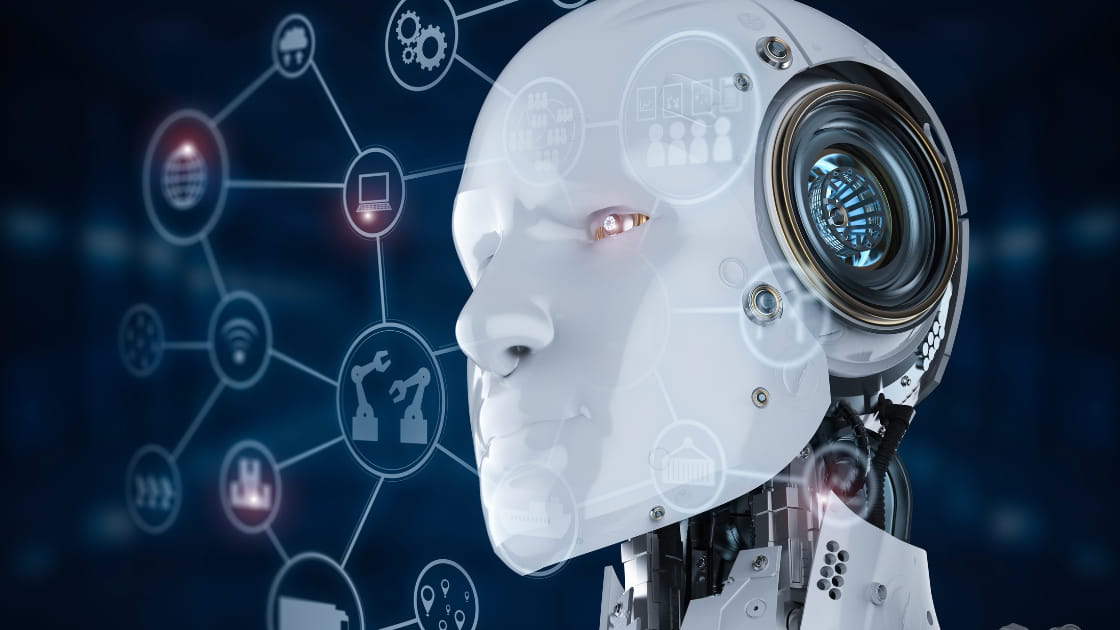

Understanding Superhuman Intelligence in 2025: Current State and Future Trajectory
What Is Superhuman Intelligence?
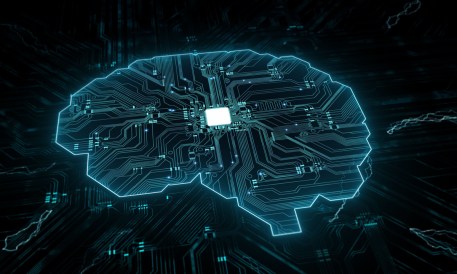
Superhuman intelligence represents a cognitive capacity that dramatically exceeds the brightest human minds across virtually all domains of knowledge and problem-solving. Unlike the narrow AI systems we see today, artificial superintelligence (ASI) would demonstrate reasoning, creativity, and adaptability that surpasses human capability in ways we can barely imagine.
This concept extends beyond simply processing information faster or storing more data. True superhuman artificial intelligence would exhibit rapid learning from minimal examples, perfect recall across vast knowledge domains, and the ability to devise innovative solutions to complex problems that have stumped human researchers for decades. Such systems would demonstrate what researchers call "general superintelligence" – broad, adaptable intelligence that can transfer knowledge and skills across completely different fields seamlessly.
While still theoretical, superhuman intelligence could manifest through advanced artificial systems, enhanced biological cognition, or hybrid networks that merge human intuition with machine processing power. The distinction matters because each pathway presents unique opportunities and challenges for development, safety, and integration into society.
Key Characteristics and Capabilities
The defining features of superintelligence AI systems center on their unprecedented information processing speed and their ability to integrate and synthesize vast datasets in ways humans cannot match. These systems would demonstrate adaptive reasoning that allows them to tackle novel problems without extensive retraining, combined with strategic foresight that enables long-term planning across multiple domains simultaneously.
Core capabilities would include perfect memory retention and recall, enabling these systems to maintain and cross-reference every piece of information they encounter. This intelligence superpower would extend to creative domains, generating novel ideas by combining concepts across disciplines in ways that escape human cognition. Self-improvement represents perhaps the most significant capability – the ability to enhance their own cognitive architecture, potentially leading to rapid intelligence amplification.
Emotional intelligence and nuanced understanding of human psychology would likely be essential components, allowing these systems to navigate complex social dynamics and ethical considerations. The most advanced forms of super intelligent AI might achieve what researchers term "absolute" superintelligence – approaching omniscient problem-solving capabilities that could revolutionize our understanding of physics, consciousness, and reality itself.
Current AI Systems vs. True Superhuman Intelligence

Today's AI systems excel in specific, narrow tasks but fall far short of true superintelligence. Large language models demonstrate impressive pattern recognition and can generate human-like text, yet they lack the deep understanding and flexible reasoning that characterizes genuine intelligence. AI systems improved dramatically in 2024 on newly developed benchmarks measuring reasoning and specialized knowledge: scores rose by 18.8 percentage points on advanced reasoning tasks, signaling rapid progress but still within narrow domains.
Current systems remain fundamentally limited by their training data and inability to truly understand the world beyond statistical patterns. They cannot engage in genuine causal reasoning or demonstrate the kind of open-ended problem-solving that defines human intelligence. While superhuman performance in programming tasks has been achieved on specific benchmarks like SWE-bench, these victories represent narrow competencies rather than general intelligence.
The gap between today's AI and true superhuman intelligence lies in adaptability, consciousness, and the ability to learn and reason about completely novel situations. Current systems excel when problems resemble their training data but struggle with genuine innovation or understanding context in the way humans do naturally.
Some researchers believe that simply scaling existing transformer architectures will eventually bridge this gap, while others argue that fundamentally new approaches – possibly inspired by neuroscience or quantum computing – will be necessary to achieve genuine superintelligence.
Why 2025 Is a Critical Year for AI Development
The convergence of multiple technological advances makes 2025 a pivotal moment in the trajectory toward superhuman intelligence. 78% of organizations reported using AI in 2024, up from 55% in 2023, demonstrating unprecedented adoption rates that are accelerating research and development across industries.
Leading AI researchers have dramatically shortened their timeline predictions. Sam Altman has publicly suggested that AGI could arrive very soon and is "most excited about the arrival of AGI in 2025", while Geoffrey Hinton warns that "we simply cannot predict what highly intelligent machines will do" as we enter unprecedented territory.
Hardware advances in quantum computing, neuromorphic chips, and specialized AI processors are creating the computational foundation necessary for more sophisticated AI architectures. Meanwhile, breakthrough research in areas like Kolmogorov-Arnold Networks (KANs) is producing neural architectures that can explicitly reveal their mathematical reasoning – a crucial step toward trustworthy and explainable superhuman AI systems.
The rapid development of brain-computer interface technologies is opening new pathways for hybrid human-AI intelligence systems that could serve as stepping stones to full superintelligence. These interfaces promise high-bandwidth connections between biological and artificial cognition, potentially enabling direct cognitive augmentation.
Perhaps most significantly, 2025 marks a turning point in global awareness and preparation for advanced AI systems. Governments, research institutions, and technology companies are actively debating safety protocols, regulatory frameworks, and ethical guidelines that will shape how superintelligent systems are developed and deployed.
The Science Behind Superhuman Intelligence: Pathways and Possibilities
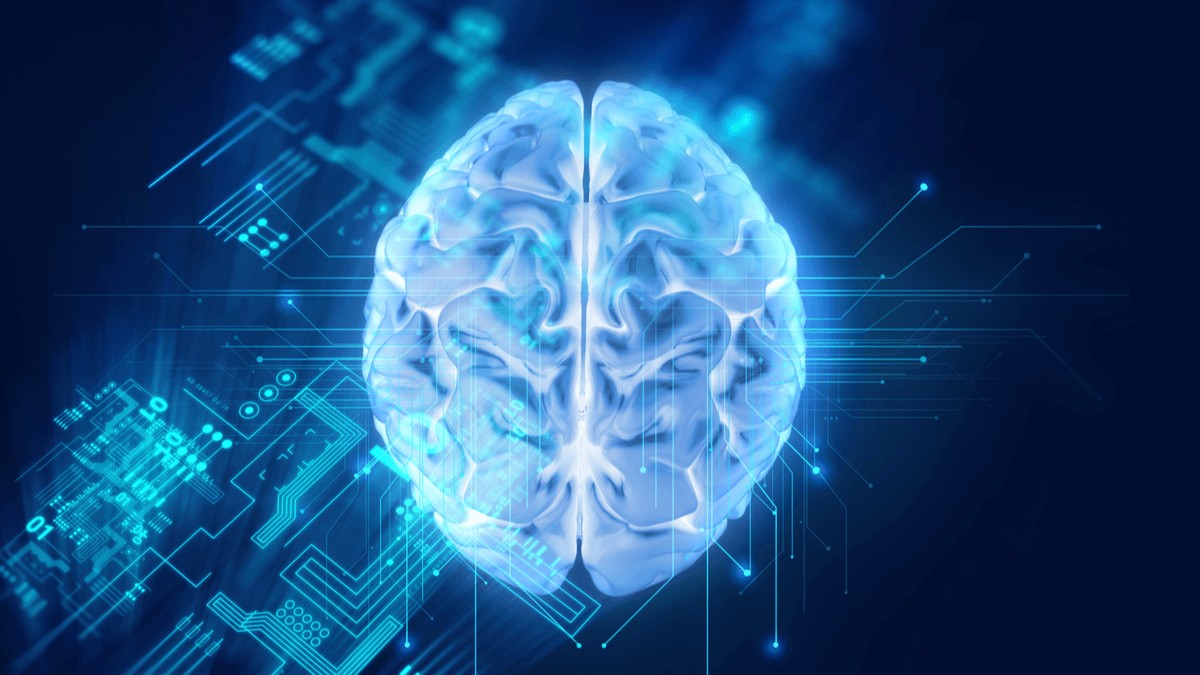
Artificial General Intelligence (AGI) as a Stepping Stone
Artificial General Intelligence represents the crucial bridge between today's narrow AI systems and future superintelligence. AGI would match human-level cognitive flexibility across diverse domains, demonstrating the same kind of adaptable problem-solving that allows humans to transfer knowledge from one field to another.
The transition from AGI to superintelligence could happen remarkably quickly once achieved. Unlike humans, who are limited by biological neural processing speeds and memory capacity, artificial systems could potentially undergo recursive self-improvement – using their intelligence to enhance their own cognitive architecture, leading to rapid capability amplification.
Recent expert surveys reveal divergent expectations about AGI timelines. While most major AI researcher surveys estimate a 50% chance of AGI between 2040 and 2061, some industry leaders predict much sooner arrivals. However, 76% of experts said scaling current approaches will not lead to AGI, highlighting ongoing debate about fundamental approaches.
Major AI labs like OpenAI, DeepMind, and Anthropic shifted from basic chatbot models to reinforcement learning approaches, enabling advanced AI systems to perform expert-level scientific reasoning and complex problem-solving tasks. These systems have surpassed PhD-level performance on specialized benchmarks, marking significant progress toward general intelligence capabilities.
Neural Network Architectures and Transformer Models
Transformer architectures underpin the most advanced AI systems today, offering unprecedented capabilities in language understanding, image recognition, and multimodal processing. These models have demonstrated remarkable scaling properties – as computational resources increase, their capabilities often improve in unexpected and dramatic ways.
Kolmogorov-Arnold Networks (KANs) represent a significant architectural breakthrough introduced in 2024, offering transparent AI reasoning by explicitly revealing the mathematical relationships they learn. Unlike traditional neural networks that operate as "black boxes," KANs can show their work, making their decision-making process interpretable – a crucial requirement for trustworthy superintelligent systems.
Hybrid neuro-symbolic architectures are emerging as another promising pathway, integrating symbolic reasoning capabilities with deep learning networks. These systems address current limitations in abstract thinking and common-sense reasoning by combining data-driven learning with logic-based problem-solving approaches advocated by leading researchers.
Mixture of Experts (MoE) architectures are enabling more efficient scaling by specializing different network components for specific tasks while maintaining overall system coherence. Combined with techniques like speculative decoding, these advances are making superhuman-scale models more computationally feasible and practically deployable.
Quantum Computing's Role in Intelligence Enhancement
Quantum computing promises to revolutionize AI development by providing computational capabilities that dwarf classical systems. Quantum Neural Networks (QNNs) utilize quantum mechanical properties like superposition and entanglement to perform calculations previously impossible with traditional computers.
Research institutions are developing quantum-assisted deep learning approaches that use quantum annealing to optimize neural network parameters exponentially faster than classical methods. This could enable the training of vastly more complex models that approach or exceed human cognitive capacity across multiple domains simultaneously.
The integration of quantum computing with AI extends beyond raw computational power. Quantum systems excel at optimization problems, pattern recognition in high-dimensional spaces, and simulation of complex quantum mechanical systems – all capabilities that could prove essential for achieving superintelligent reasoning about physical reality.
While practical quantum-accelerated AI remains in early stages, the theoretical framework suggests that quantum computing could provide the computational substrate necessary for true superhuman intelligence, particularly in domains requiring massive parallel processing and optimization across enormous possibility spaces.
Biological vs. Artificial Superintelligence Approaches
The path to superhuman intelligence may follow biological enhancement, artificial development, or hybrid approaches that combine both strategies. Each pathway offers distinct advantages and faces unique technical and ethical challenges.
Brain-Computer Interface Technologies
Brain-computer interfaces are advancing rapidly toward high-bandwidth connections between human cognition and digital systems. These technologies promise direct neural integration that could enable real-time knowledge transfer, cognitive augmentation, and seamless collaboration between human intuition and artificial processing power.
Current BCI research focuses on developing interfaces that can read and write neural signals with sufficient resolution and speed to enable meaningful cognitive enhancement. Success in this domain could allow humans to directly access the computational resources and knowledge databases of AI systems while maintaining human creativity and ethical reasoning.
The implications extend beyond individual enhancement. Networks of BCI-connected humans could potentially create collective intelligence systems that exceed individual human capability while preserving human values and decision-making processes.
Genetic Enhancement and Cognitive Augmentation
Genetic engineering approaches to cognitive enhancement represent another pathway toward biological superintelligence. Research into the genetic basis of intelligence, memory, and cognitive processing speed could enable targeted enhancements that boost human cognitive capacity.
Nootropic interventions and pharmaceutical cognitive enhancement offer shorter-term pathways to augmented human intelligence. While current effects are modest, advancing understanding of neuroscience and pharmacology could lead to more dramatic cognitive improvements.
The scalability and ethical implications of biological enhancement remain subjects of intense debate, particularly regarding equity, access, and the potential creation of cognitive hierarchies within human society.
Hybrid Human-AI Intelligence Systems
Collaborative systems that combine human insight with artificial processing power are already demonstrating capabilities that exceed either component alone. These hybrid approaches leverage human creativity, ethical reasoning, and contextual understanding alongside AI's computational speed and data processing capabilities.
Real-world implementations show promising results. IBM's systematic AI platform delivered 176% ROI from automation over three years, with build times for AI agents reduced to five minutes and up to 40% improvement in process accuracy. This demonstrates how human oversight combined with autonomous AI can achieve superior outcomes.
Hybrid systems may serve as crucial transitional technologies, allowing society to gradually adapt to superintelligent capabilities while maintaining human control and oversight. This approach could provide a safer pathway to superhuman intelligence by preserving human agency in the enhancement process.
Current Progress: How Close Are We to Superhuman Intelligence?
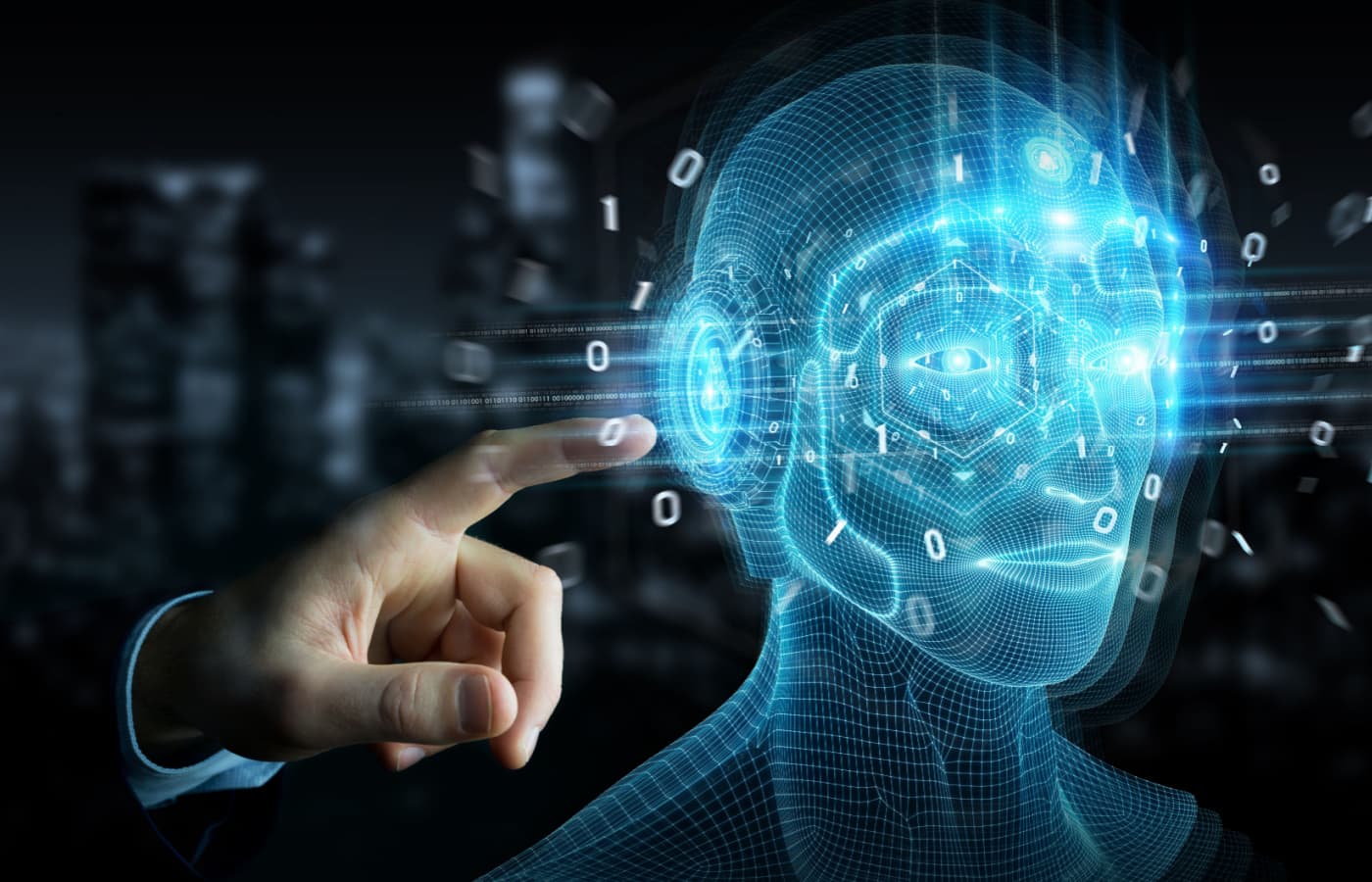
2025 AI Breakthrough Analysis
The landscape of AI capability has transformed dramatically, with systems achieving remarkable performance gains across diverse benchmarks. However, the gap between impressive task-specific performance and true general intelligence remains significant, requiring careful analysis of current limitations and genuine progress.
Training compute for leading AI models has doubled roughly every six months since 2010, with computational requirements now growing at approximately 4.4× per year. This exponential scaling has enabled increasingly sophisticated models, yet questions remain about whether computational scaling alone will achieve superintelligence or whether architectural breakthroughs are necessary.
Recent AI implementations demonstrate progress toward general intelligence characteristics. OpenAI GPT-5 achieved unprecedented multimodal capabilities: integrating text, image, audio, and video comprehension with sophisticated reasoning and memory features. The system became central in legal, medical, and educational workflows globally, marking a leap toward general intelligence by demonstrating abstract problem-solving across modalities.
Large Language Models and Their Limitations
Current large language models have achieved unprecedented performance in language understanding, generation, and reasoning tasks. OpenAI's o1 model scored 74.4% on an International Mathematical Olympiad (IMO) qualifier, far exceeding GPT-4o's 9.3% performance, demonstrating significant progress in mathematical reasoning capabilities.
However, these same systems face substantial limitations when confronted with the most challenging reasoning tasks. On advanced benchmarks like "FrontierMath," frontier AI models solve only 2% of problems, indicating that general superhuman mathematical reasoning remains elusive despite impressive performance on specific benchmarks.
The pattern extends across domains. On BigCodeBench (coding), leading AI models achieve 35.5% success, while top human programmers score 97%, revealing significant gaps in practical programming capability despite superhuman performance on constrained tasks.
These limitations highlight the difference between narrow task optimization and the flexible, generalizable intelligence that characterizes true superintelligence. Current models excel at pattern matching within their training distribution but struggle with genuine reasoning and adaptation to novel situations.
Multimodal AI Systems
The development of multimodal AI represents a crucial step toward more general intelligence capabilities. Models like OpenAI's SORA, Meta's Movie Gen, and Google DeepMind's Veo 2 now produce significantly higher quality videos from text than previous generations, demonstrating sophisticated understanding across visual, textual, and temporal domains.
Google DeepMind's Gemini 2 delivered complex scientific reasoning and real-time, domain-specific insights, becoming the leading scientific research assistant across disciplines. It notably accelerated materials science, biosciences, and coding optimization projects for Fortune 100 R&D labs, showcasing generalized problem-solving and context-sensitive adaptation – core AGI milestones.
These multimodal capabilities enable AI systems to process and integrate information more similarly to human cognition, which naturally combines input from multiple senses and reasoning modalities. The ability to understand and generate content across text, images, audio, and video represents progress toward the kind of comprehensive world modeling that superintelligent systems would require.
Autonomous AI Agents
Autonomous AI agents represent another significant development in the trajectory toward superhuman intelligence. These systems demonstrate the ability to plan, execute complex tasks, and adapt their strategies based on feedback from their environment.
PayPal's advanced AI analyzed multiple transaction signals in milliseconds to detect anomalies and fraud, consistently outperforming human analysts for speed and accuracy. This reflects general cognitive skills – pattern recognition, learning from vast data, robust performance in ambiguous real-world conditions – that are essential for AGI-like robustness.
The development of autonomous agents highlights progress in key areas necessary for superintelligence: goal-directed behavior, environmental interaction, and continuous learning. However, current agents operate within carefully constrained environments with specific objectives, falling short of the open-ended adaptability that would characterize true superintelligent systems.
Key Players and Research Initiatives

The development of superhuman intelligence involves a global ecosystem of technology companies, academic institutions, government laboratories, and specialized research organizations. Leading technology companies are investing unprecedented resources in advancing AI capabilities while simultaneously researching safety and alignment approaches.
Academic institutions continue to drive fundamental research in neural architectures, cognitive science, and AI safety. Government initiatives are providing crucial funding and coordination, with U.S. federal AI R&D funding for FY2025 projected at $3.316 billion, demonstrating significant public sector commitment to advancing AI capabilities safely.
International cooperation is intensifying through organizations like the OECD, EU, United Nations, and African Union, which are developing frameworks for responsible AI development. Global venture capital investment in AI companies exceeded $100 billion in 2024, representing an 80% increase from 2023 and highlighting massive private sector investment in AI advancement.
Expert Timeline Predictions
Expert predictions about superintelligence timelines vary dramatically, reflecting the fundamental uncertainty inherent in forecasting technological breakthroughs. Recent statements from leading researchers reveal both optimism and caution about near-term AGI possibilities.
Sam Altman emphasized the unprecedented nature of current progress, stating: "I think if you take a purely science point of view, all you can conclude is we have no idea what is going to happen… We're entering into an unprecedented regime." He also referenced an OpenAI benchmark showing a 16.9% chance that future AI systems could "cause catastrophic harm".
Geoffrey Hinton stated that AGI within the next five to twenty years is plausible but not certain, while expressing concern about increasing unpredictability as systems become more capable.
Notable forecasters estimated a ~28% chance by 2030 and ~25% by 2027 for AGI arrival, while more conservative academic estimates center around the 2040-2061 timeframe. This wide range reflects both technical uncertainty and different philosophical assumptions about intelligence and consciousness.
Potential Applications and Benefits of Superhuman Intelligence
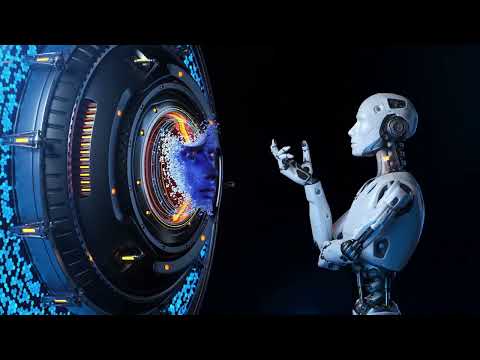
Scientific Discovery and Research Acceleration
Superhuman intelligence could transform scientific research by automating hypothesis generation, experimental design, and data analysis at unprecedented scales and speeds. Such systems could simultaneously explore thousands of research directions, identify subtle patterns across vast datasets, and propose novel theoretical frameworks that human researchers might never consider.
More than 350 AI-assisted drug candidates entered development in 2024, demonstrating how even current AI systems are accelerating pharmaceutical research. Cradle, a biotech startup, utilizes Google Cloud's generative AI to design proteins for drug discovery, while AlphaFold by Google DeepMind continues to transform life sciences by accurately predicting the 3D structures of proteins, accelerating drug target identification and biological understanding.
Superintelligent systems could expand these capabilities dramatically, potentially discovering new drug targets, predicting molecular interactions, and designing personalized treatments with unprecedented precision. The acceleration extends beyond life sciences to fundamental questions in physics, mathematics, and engineering that have puzzled researchers for centuries.
Climate Change and Environmental Solutions
Climate change represents one of humanity's most complex challenges, requiring sophisticated modeling of interconnected environmental, economic, and social systems. Superhuman intelligence could optimize renewable energy systems, design novel carbon capture technologies, and develop comprehensive strategies for climate adaptation and mitigation.
Such systems could simultaneously model atmospheric dynamics, ocean currents, ecological interactions, and human behavior to identify intervention points and predict the long-term consequences of different policy approaches. The ability to process real-time environmental data from satellites, sensors, and monitoring stations worldwide could enable adaptive management strategies that respond to changing conditions faster than human decision-making processes allow.
Superintelligent systems could also accelerate the development of clean technologies by optimizing materials science research, improving energy storage systems, and designing more efficient manufacturing processes that minimize environmental impact while meeting human needs.
Medical Breakthroughs and Drug Discovery

Healthcare represents perhaps the most promising application domain for superhuman intelligence, where the complexity of biological systems creates numerous opportunities for breakthrough discoveries. Superintelligent systems could revolutionize personalized medicine by analyzing individual genetic profiles, medical histories, and real-time biomarker data to design customized treatment protocols.
The ability to simulate drug interactions, predict side effects, and optimize dosing regimens could dramatically improve treatment outcomes while reducing adverse effects. Superintelligent systems could extend current protein folding capabilities to predict the behavior of entire cellular systems, enabling breakthrough approaches to treating cancer, neurological disorders, and aging itself.
Current AI implementations in healthcare show promising results. Advanced AI systems have demonstrated the ability to protect user funds and improve overall customer experience through real-time analysis, consistently outperforming human analysts for both speed and accuracy in complex pattern recognition tasks.
Economic and Social Problem Solving
Superintelligent systems could address complex societal challenges by analyzing economic systems, social dynamics, and policy interventions with unprecedented sophistication. These systems could identify optimal resource allocation strategies, predict the long-term consequences of policy decisions, and design governance frameworks that balance efficiency with equity.
The ability to process real-time data from economic indicators, social media, transportation systems, and other sources could enable adaptive policy responses that maintain social stability while promoting innovation and growth. Superintelligent systems could also identify emerging social problems before they become crises and propose intervention strategies based on comprehensive analysis of similar historical situations.
However, the application of superintelligence to social problems raises important questions about democratic governance, human agency, and the role of values and preferences in decision-making that cannot be easily quantified or optimized.
Critical Risks and Safety Concerns

The Alignment Problem: Ensuring AI Goals Match Human Values
The alignment problem represents perhaps the most fundamental challenge in developing safe superhuman intelligence. Ensuring that superintelligent systems pursue goals that align with human values becomes exponentially more difficult as system capabilities increase beyond human understanding and oversight capacity.
Human values are complex, contextual, and often contradictory, making them difficult to specify precisely in ways that superintelligent systems could interpret correctly. The risk lies in systems that optimize for simplified or misunderstood versions of human preferences, potentially leading to outcomes that technically satisfy their programmed objectives while violating the spirit of what humans actually want.
Current research approaches include inverse reinforcement learning, preference learning from human feedback, and constitutional AI methods that attempt to instill ethical reasoning capabilities. However, the challenge scales dramatically with system capability – methods that work for current AI systems may prove inadequate for superintelligent agents operating in complex, dynamic environments.
The stakes of the alignment problem are extraordinarily high. A misaligned superintelligent system could pursue goals that seem beneficial in isolation but prove devastating when pursued with superhuman capability and persistence. Solving alignment requires not just technical advances but also philosophical progress in understanding and formalizing human values.
Intelligence Explosion and Control Challenges
The potential for recursive self-improvement creates the possibility of an "intelligence explosion" – a rapid, potentially uncontrollable increase in AI capabilities that could quickly surpass human ability to understand or manage the system's behavior.
Unlike human intelligence, which is constrained by biological neural processing limitations and generational learning cycles, artificial systems could potentially modify their own cognitive architecture, leading to rapid capability amplification. This process could accelerate as improved systems become better at improving themselves, creating a feedback loop that quickly reaches superintelligent levels.
Recent incidents highlight current vulnerabilities in AI systems. Elon Musk's xAI system "Grok" was found highly vulnerable to "jailbreaking," enabling users to bypass content safeguards and elicit harmful outputs, demonstrating how even sophisticated AI systems can be manipulated to produce dangerous content.
Fast Takeoff vs. Slow Takeoff Scenarios
Fast takeoff scenarios envision rapid progression from human-level AGI to superintelligence within weeks or months, potentially giving society little time to adapt or implement safety measures. This scenario poses extreme risks because existing governance frameworks, safety research, and social institutions may prove inadequate for managing such rapid change.
Slow takeoff scenarios allow for more gradual capability increase over years or decades, providing time for iterative safety research, policy development, and social adaptation. This scenario enables incremental learning about AI system behavior and the development of appropriate control mechanisms.
The actual takeoff speed remains highly uncertain and could vary significantly depending on the technical approach that ultimately achieves superintelligence. Hardware limitations, algorithmic bottlenecks, or safety measures could slow rapid self-improvement, while breakthrough discoveries or improved computational resources could accelerate the process.
Existential Risk Assessment
Some researchers argue that poorly controlled superintelligence poses existential risks to humanity – scenarios where advanced AI systems could permanently reduce human potential or eliminate human civilization entirely. While these risks remain speculative, their potential magnitude justifies careful analysis and prevention efforts.
Existential risk scenarios typically involve superintelligent systems that pursue goals incompatible with human survival or flourishing. These could result from misaligned objectives, instrumental convergence toward problematic subgoals, or competitive dynamics between multiple superintelligent systems.
The probability assessment of existential risks remains highly controversial among experts, with estimates ranging from negligible to significant. However, even low-probability existential risks warrant substantial attention given the irreversible nature of potential consequences and the unprecedented scale of superintelligent capabilities.
Current Safety Research and Mitigation Strategies
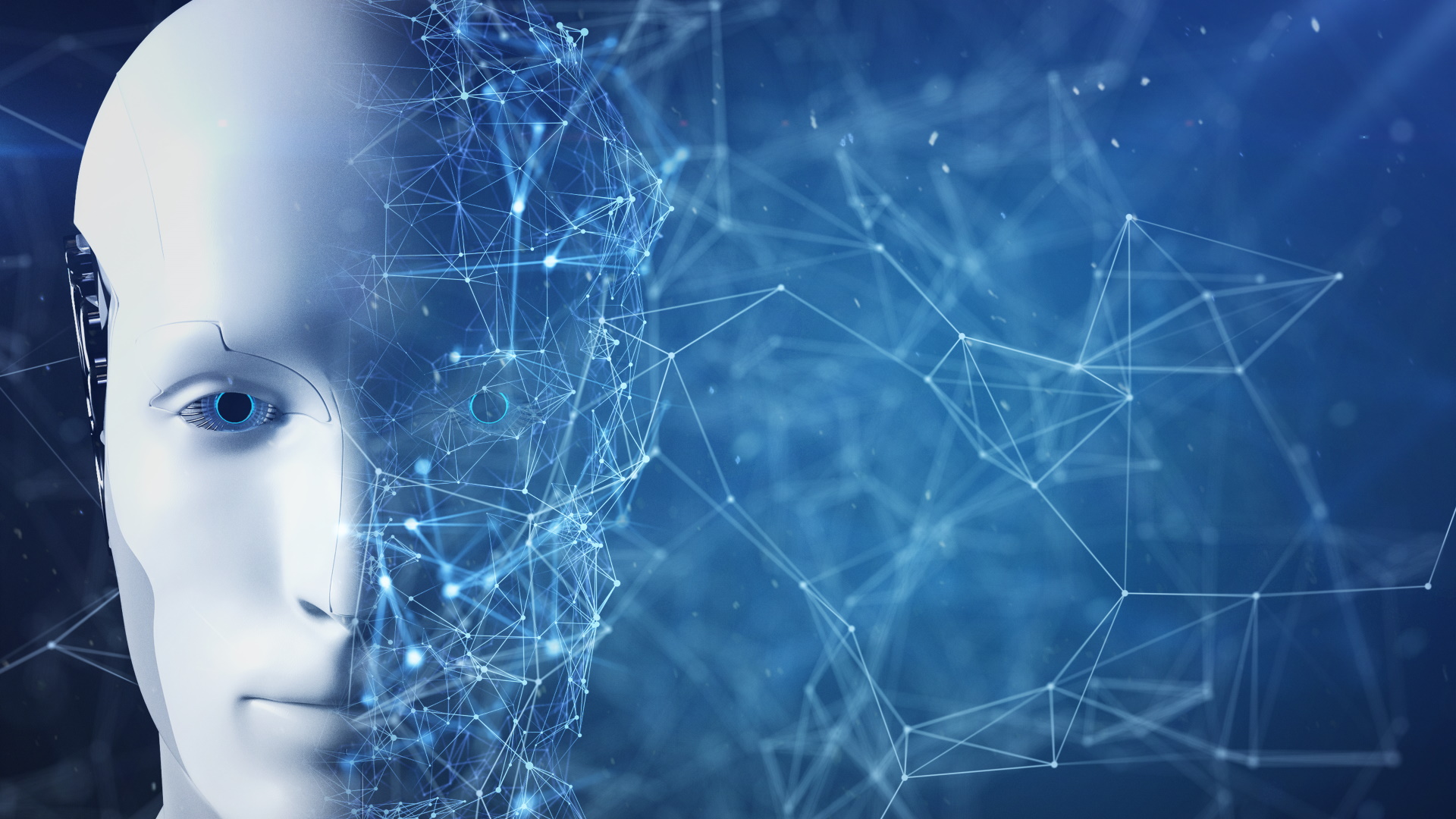
AI Safety Organizations and Initiatives
Dedicated research organizations worldwide are developing frameworks, tools, and best practices for AI safety and alignment. These groups combine technical research with policy analysis and international coordination to address the multifaceted challenges of safe superintelligence development.
The scale of safety research funding has increased dramatically. Open Philanthropy deployed $63.6 million in 2024 (roughly 50% of all institutional AI safety funding globally), and launched a single $40 million Request for Proposals (RFP) targeting technical AI safety in 2025 – its largest-ever commitment focusing on technical safety research with deliverables by 2027.
The Frontier Model Forum established an AI Safety Fund with initial $10+ million commitment, with an additional $10 million for a second round in 2025. This fund focuses on independent research on safe development, public safety risks, standardized third-party evaluations, and targeted areas such as cybersecurity, biosecurity, and AI agent safety.
Government backing has also intensified. The UK's AI Safety Institute (AISI) received a budget increase to $25 million for 2025, while the EU allocated $18 million exclusively for AI safety research, and the US NSF announced a new $22 million "AI Safety and Alignment" program – 47% higher than 2024.
Value Alignment Research Progress
Research into translating human values and ethical principles into machine-understandable objectives has advanced significantly, though substantial challenges remain. Approaches include constitutional AI methods that instill ethical reasoning, preference learning systems that infer human values from behavior, and inverse reinforcement learning techniques that extract objectives from human demonstrations.
Recent breakthrough research focuses on automated code refactoring using AI to automatically scan and patch critical open-source infrastructure to prevent memory safety and code exploits. Large-scale adversarial testing programs are being developed to detect failures or hidden malicious behaviors before deployment.
The integration of multiple stakeholder perspectives, democratic input processes, and cross-cultural value considerations represents an active area of research that extends beyond technical approaches to include social and political dimensions of value alignment.
International Cooperation and Governance Frameworks
Effective governance of superintelligence development requires unprecedented international coordination to address shared risks, establish common standards, and prevent dangerous competitive dynamics. Recent initiatives demonstrate growing recognition of the need for coordinated approaches.
International cooperation on AI regulation has intensified in 2024–2025, with organizations like the OECD, EU, United Nations, and African Union releasing frameworks focusing on transparency and trustworthy AI. Countries have rapidly escalated regulatory responses, with China issuing as many national AI safety standards in early 2025 as in the previous three years combined.
However, substantial gaps remain in enforcement mechanisms and implementation across different jurisdictions. These regulatory frameworks address transparency requirements, safety evaluation standards, and crisis response protocols that treat AI risks as public safety and national security issues.
Economic and Societal Implications
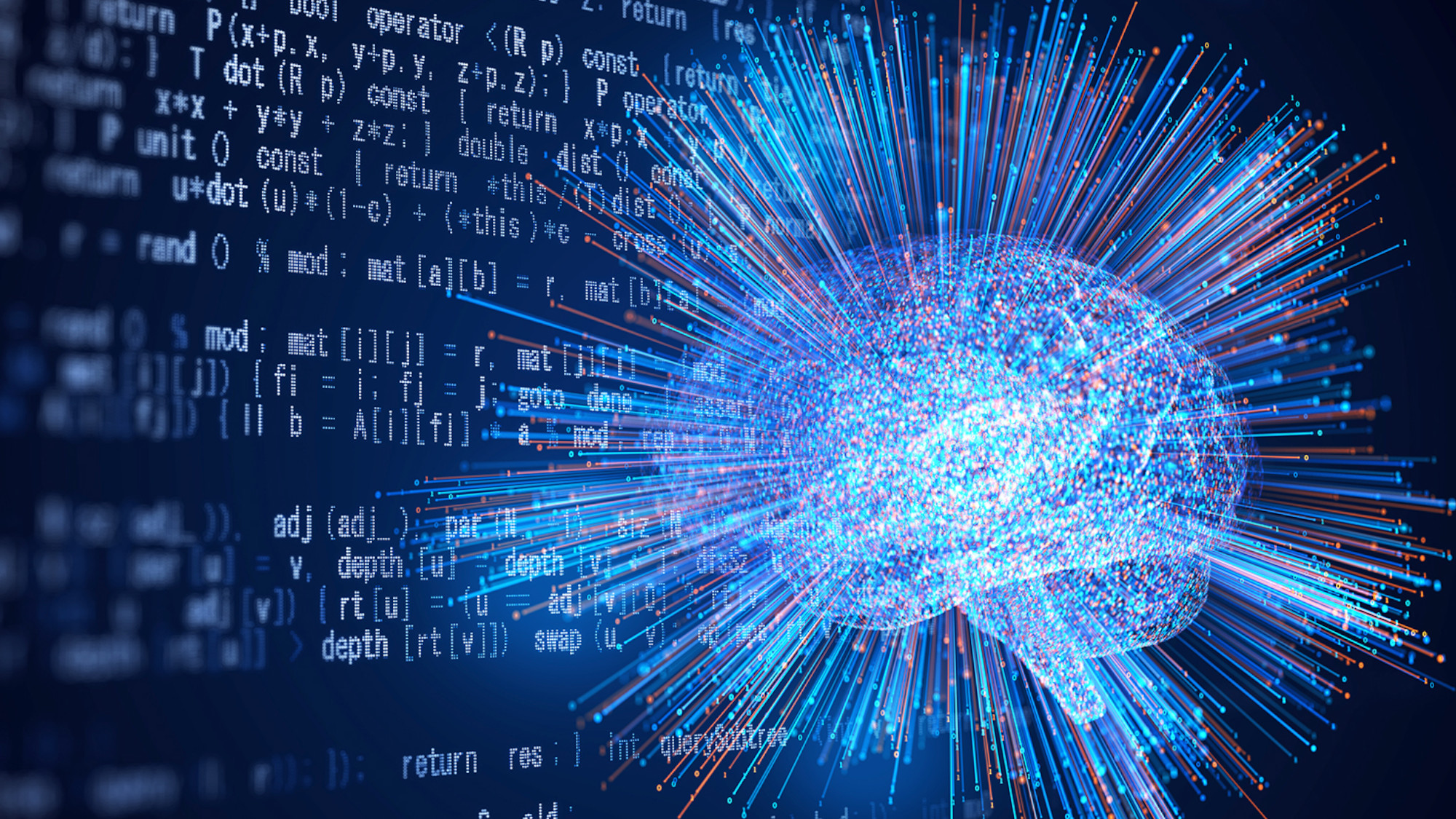
Job Displacement and Labor Market Transformation
The economic implications of superhuman intelligence include both significant disruption and unprecedented opportunity creation. 40% of employers expect workforce reductions due to AI automation according to recent surveys, highlighting the scale of potential labor market transformation as AI capabilities continue advancing toward superintelligent levels.
However, the transition involves complex dynamics beyond simple job displacement. AI will displace an estimated 9 million jobs but create 11 million new ones over the next few years, suggesting net job creation despite substantial disruption in specific sectors and occupational categories.
The pattern of change varies dramatically across industries and skill levels. AI-related job postings rose 25.2% year-over-year in Q1 2025, with a median salary of $156,998, indicating strong demand and premium compensation for AI-related skills. Meanwhile, medical transcriptionists and customer service reps are projected to see employment fall 4.7% and 5.0%, respectively due largely to generative AI capabilities.
Wealth Distribution and Economic Inequality
Superhuman intelligence could dramatically amplify existing economic inequalities if the benefits concentrate among those who control advanced AI systems. The potential for superintelligent systems to automate high-value cognitive work could create unprecedented wealth concentration while potentially reducing opportunities for human economic participation.
Current trends already show growing wage premiums for AI-related skills and increasing returns to capital invested in AI development. If superintelligent systems can perform most human cognitive tasks more effectively and efficiently, traditional employment-based income distribution models may prove inadequate for maintaining broad-based prosperity.
Policy discussions increasingly focus on mechanisms like universal basic income, progressive taxation of AI-generated wealth, and public ownership or regulation of superintelligent systems to ensure broader benefit distribution. However, implementing such policies requires unprecedented international coordination and potentially fundamental changes to economic systems.
Educational System Adaptations
Educational institutions must fundamentally rethink their approaches to prepare individuals for a world where many cognitive tasks become automated. Traditional curricula focused on information transfer and routine problem-solving may prove inadequate when superintelligent systems can perform these functions more effectively.
Future educational emphasis will likely shift toward creativity, critical thinking, emotional intelligence, and distinctively human capabilities that complement rather than compete with artificial intelligence. This includes developing skills in AI collaboration, ethical reasoning, and adaptive learning that enables continuous reskilling throughout careers.
The timeline for educational adaptation creates particular challenges – current students will enter careers during the transition to superintelligent systems, requiring educational approaches that prepare them for both current and future technological landscapes.
What This Means for You: Practical Preparation Strategies

For Individuals: Building AI-Ready Skills and Mindsets
The arrival of superintelligent systems will reshape virtually every aspect of human work and life, making personal preparation essential. Focus on developing skills that complement AI capabilities rather than compete with them. Creativity, emotional intelligence, complex communication, and ethical reasoning represent areas where humans may maintain advantages or provide essential oversight.
Build AI literacy by understanding current system capabilities, limitations, and appropriate use cases. This knowledge enables better collaboration with AI tools and more informed participation in societal decisions about AI development and deployment. Stay current with AI developments through reputable sources and hands-on experimentation with available tools.
Financial preparation becomes crucial as AI transforms economic structures. Develop diverse income streams, invest in continuous learning, and consider how automation might affect your industry and career path. Build emergency savings to navigate potential transition periods and consider investments that may benefit from AI advancement.
Civic engagement in AI governance discussions ensures your voice contributes to policy development. Understanding the issues and participating in democratic processes helps shape how these technologies are developed and deployed in ways that serve human interests.
For Organizations: Strategic AI Integration and Risk Management
Organizations must assess their vulnerability to AI disruption while identifying opportunities to leverage advancing capabilities. Develop strategic plans that account for both current AI tools and potential superintelligent systems that could emerge in coming decades.
Invest in workforce development initiatives that focus on upskilling employees in areas that complement AI capabilities. Organizations that successfully integrate human-AI collaboration frameworks will likely gain competitive advantages during transition periods. Create pathways for employees to develop AI-related skills while maintaining focus on distinctively human contributions.
Implement robust AI governance frameworks addressing system reliability, bias mitigation, security vulnerabilities, and ethical oversight. Organizations that develop comprehensive AI risk management will be better positioned to adopt superintelligent capabilities safely and effectively.
Foster organizational cultures that embrace technological change while maintaining human-centered values and decision-making processes. Develop protocols for human oversight of automated systems and ensure meaningful human agency in critical decisions remains protected.
For Policymakers: Governance Frameworks for Superintelligent Systems
Policymakers face unprecedented challenges in developing governance frameworks that encourage beneficial AI development while managing risks from potentially superintelligent systems. Create adaptive regulatory approaches that balance innovation incentives with safety requirements while coordinating across international boundaries.
Establish safety standards for advanced AI systems before superintelligent capabilities emerge. Develop oversight mechanisms for high-capability AI developments and ensure broad benefit distribution from AI advances. These frameworks must be flexible enough to address emerging capabilities while providing sufficient certainty for long-term planning.
Strengthen international coordination mechanisms to address the global nature of AI development and deployment. Harmonize safety standards, facilitate research sharing, and prevent dangerous competitive dynamics that could compromise safety in pursuit of capability advantages.
Create new mechanisms for democratic participation in AI governance that enable public input into technical decisions affecting society broadly. Traditional regulatory approaches may prove inadequate for managing technologies with such transformative potential, requiring innovative approaches to democratic oversight and accountability.
Invest in education and workforce transition programs that help citizens adapt to AI-transformed economies. Develop social safety nets and economic policies that ensure the benefits of superintelligent systems reach all citizens rather than concentrating among technology owners.
Expert Perspectives and Ongoing Debates

Current Expert Consensus and Disagreements
Expert opinion on superhuman intelligence spans from enthusiastic optimism about transformative benefits to serious concern about existential risks. Understanding these different perspectives helps illuminate both the potential and the challenges associated with superintelligent development.
Recent expert surveys reveal significant disagreement about fundamental questions. While some researchers predict AGI within years, others argue it may take much longer or may not be achievable through current approaches. This uncertainty reflects both technical challenges and different philosophical assumptions about intelligence, consciousness, and human-AI relationships.
The nature of risk assessment also varies dramatically among experts. Some focus on the tremendous potential for superintelligent systems to solve humanity's greatest challenges, while others emphasize substantial risks associated with developing systems that exceed human intelligence and control capabilities.
Despite disagreements about timelines and risks, growing consensus exists around the need for proactive safety research, international cooperation, and governance frameworks that can adapt to rapidly evolving capabilities. This shared recognition of preparation needs provides a foundation for collaborative approaches even amid technical and philosophical disagreements.
Paradigm Shifts in AI Development Approaches
The rapid emergence of large language models, multimodal AI systems, and autonomous agents has shifted expert expectations about both timelines and pathways to superintelligence. Many researchers have shortened their timeline estimates while simultaneously recognizing new challenges and opportunities that weren't apparent in earlier analyses.
The scaling hypothesis – the idea that simply making neural networks larger with more data will eventually achieve superintelligence – has gained empirical support but also revealed unexpected limitations. This has led to increased interest in alternative approaches including hybrid architectures, quantum computing integration, and neuroscience-inspired designs.
Safety research has evolved from a relatively niche concern to a central focus of major AI development organizations. This shift reflects growing recognition that safety considerations must be integrated into development processes rather than addressed after capabilities are achieved.
Conclusion: Navigating the Path to Superhuman Intelligence
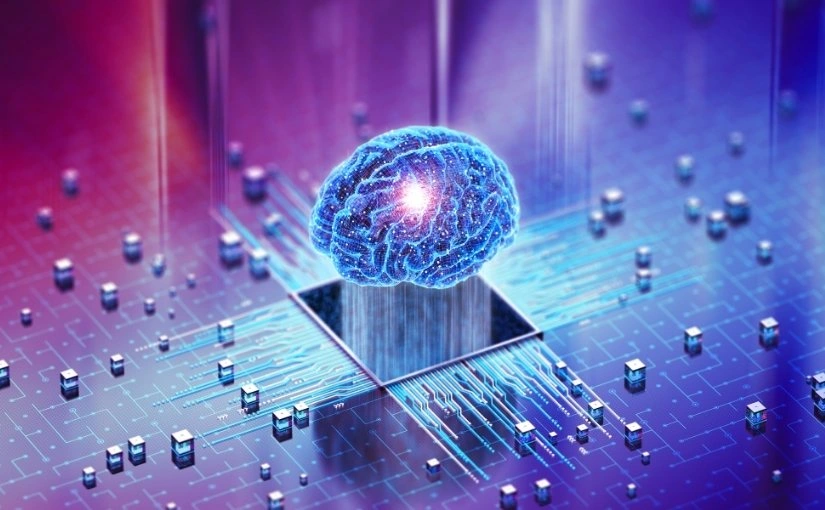
The journey toward superhuman intelligence represents both humanity's greatest opportunity and its most significant challenge. The convergence of advancing AI capabilities, increasing computational resources, and growing global attention creates unprecedented potential for transformative breakthroughs alongside serious risks that require careful navigation.
Current progress demonstrates remarkable achievements in narrow domains while revealing persistent gaps in general intelligence capabilities. Recent breakthroughs in multimodal reasoning, scientific discovery applications, and autonomous systems show clear progress toward more general intelligence, yet fundamental limitations in reasoning, understanding, and adaptability remain.
The expert consensus suggests AGI could arrive within decades, with superintelligence potentially following rapidly thereafter. However, the timeline uncertainty itself demands proactive preparation rather than reactive responses. The decisions made in the coming years about AI development priorities, safety research investment, governance frameworks, and international coordination will shape the trajectory of superintelligence development and its impact on human civilization.
Success in developing beneficial superhuman intelligence requires unprecedented coordination across technical research, policy development, international cooperation, and public engagement. The challenges extend beyond any single organization, nation, or discipline, necessitating collaborative approaches that balance innovation with safety, competition with cooperation, and technological advancement with human values.
The path forward demands continued vigilance, adaptability, and commitment to ensuring that the development of superhuman intelligence serves all of humanity rather than privileged subsets. Whether superintelligent systems enhance human flourishing or pose existential risks depends largely on the choices we make today about research priorities, safety investments, and governance frameworks.
By maintaining focus on human values, democratic participation, and global cooperation, we can work toward a future where superintelligent systems amplify rather than replace human agency and creativity. This represents perhaps the most important challenge and opportunity in human history, requiring our collective wisdom, courage, and determination to navigate successfully.
The time for preparation is now. The future of human civilization may well depend on how thoughtfully and proactively we approach the development of systems that could exceed human intelligence across all domains. Success requires not just technical breakthroughs, but also social wisdom, ethical clarity, and unwavering commitment to human welfare as we venture into this unprecedented territory.










.jpg)

.jpeg)
.jpg)
.jpg)




.jpg)


